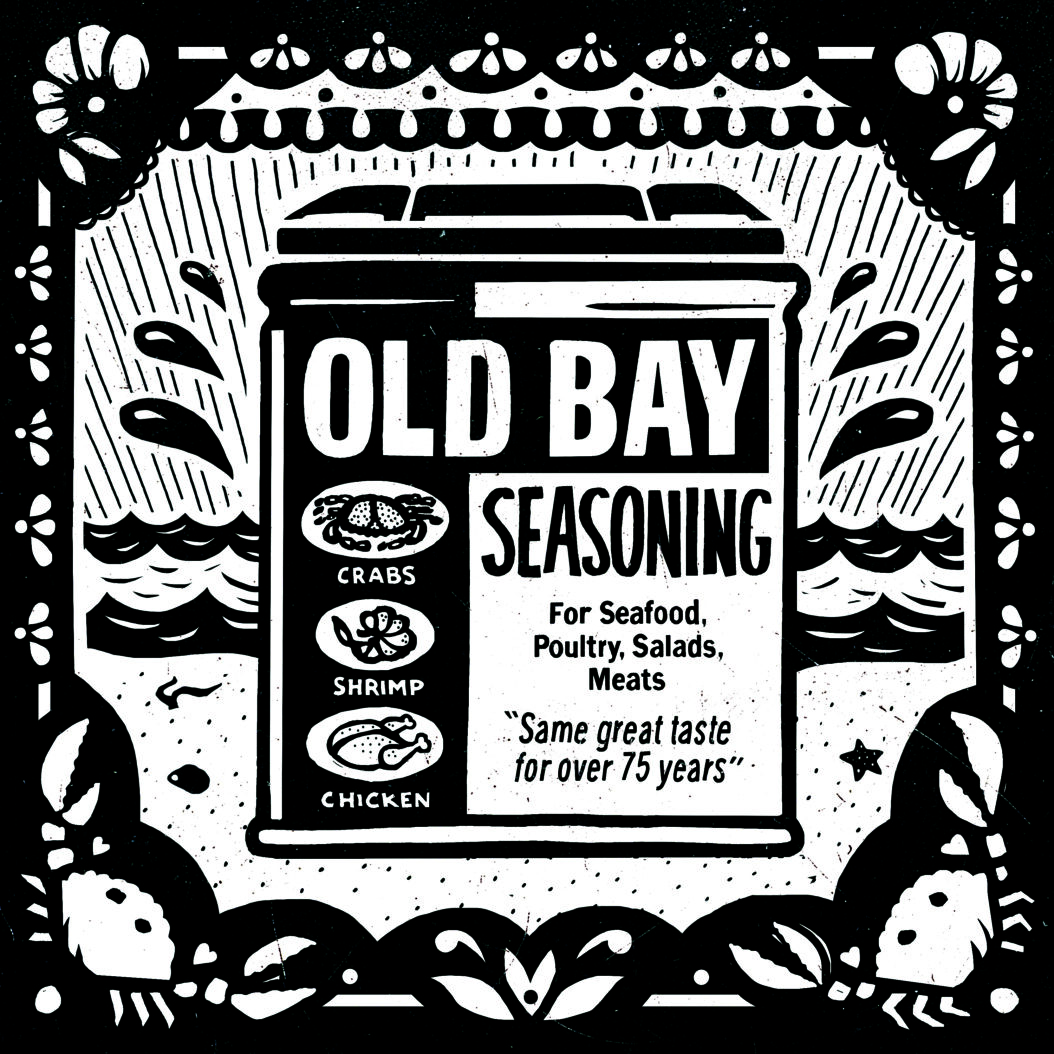
“How crabs are supposed to taste.”
There are certain foods that remind you of who you are. Flavors you grew up with, and couldn’t live without. You share them with friends and acquaintances so that they can understand you a little better. These foods provide a link between past and future in an incredibly powerful way.
Old Bay is one of these foods. Ok, it’s technically a seasoning, not a food, but it’s edible, so it counts. (Right?) I casually mentioned my interest in Old Bay to a friend, and he excitedly rattled off 145 things I had to try it on. He was insistent. I LOVE that. And I’m going try all of those things. But first, let’s talk about the origin of this incredible product.
The story of Old Bay begins in Germany, where inventor Gustav Brunn was running a successful business making spice blends for sausages. It was 1938. Hitler was in power. Brunn was Jewish. Things got bad, then worse. Brunn was sent to Buchenwald concentration camp, where he spent two weeks before his lawyer was able to secure his release (with a 10,000 mark bribe to the Gestapo.) His head had been shaved and he had pneumonia, but he was free. Within weeks, Brunn and his family were on a ship sailing to the United States, with an electric spice grinder in tow.
They settled in Baltimore, where they had family, but earning a living in their new country was a challenge. Brunn was hired by McCormick and Company, a spice brand you might recognize as the current manufacturer of Old Bay. But we’re not there yet! Hold your horses, kiddos.
Gustav Brunn was fired from McCormick after just three days. I’ve read accounts that attribute this to his poor English language skills, while other articles say he was fired for being a Jew and told to “Go see the Jewish charities.” Either way, it was enormous, discriminatory mistake that McCormick would come to regret. (Note: The official word from McCormick is that they have no record of ever having employed Brunn. However, his family’s word, and the fact that he was so resistant to ever sell to them lead me to believe this part of the story.)
Brunn decided to start his own business: The Baltimore Spice Company. His shop was right across from a bustling fish market, and as time went on, Brunn noticed that fish peddlers would often stop in to buy spices for seafood blends. Pepper, salt, mustard, and a few other ingredients here and there. Soon, Brunn began working on his own spice blend, a complex mix of 18 different spices that added up to something savory and a little sweet and a little hot and incredibly delicious. Old Bay was officially on the scene. The only problem was…no one really wanted it!
As we mentioned, each fish peddler made his own spice blends, and was reluctant to try anything else. There was ego involved here, folks. But Brunn was generous with samples, and when the fish guys offered Brunn’s invention to their customers, the customers wanted more.
The spice blend began to catch on, but it needed a cooler name. Brunn had originally called it “Delicious Brand Shrimp and Crab Seasoning,” which certainly explains what it is, but the name lacks pizazz. Luckily, Brunn had “a friend in advertising” (which is something everyone needs) and that friend suggested “Old Bay Seafood Seasoning.” This tied the product to Baltimore and the Old Bay steamship line, and established a “local” identity that would bind generations of Marylanders together forever and ever.
Anyway. Brunn was again a successful businessman. His spice blend was gaining popularity rapidly, and you know who noticed? McCormick. Yup. The same McCormick who had fired him. Over the years, they would try to buy his recipe, or copy it, or make something better, but it was impossible.
For 44 years, Gustav Brunn made Old Bay and sold it to a public who used it to flavor their seafood, but didn’t stop there. Old Bay became a popular topping for French fries, (they’re called crab fries, obviously) deviled eggs, popcorn, poultry, corn on the cob, Bloody Mary’s, roasted nuts, cornbread, and even melon. There was almost nothing that this spice blend couldn’t improve. (Or at least nothing its fans weren’t willing to try.)
When Brunn was 92, he finally sold the company. NOT to McCormick, but to Smith Corona Machines who were most famous for making typewriters. The brand switched hands a few times over the coming years, but in 1990, McCormick finally got their hands on it. (For an estimated 11-14 million dollars.)
This origin story is incredible. That a man who was meant to be executed in Nazi Germany escaped and went on to create one of the most popular spice blends in the United States is surprising enough, but when you add in the fact that McCormick FIRED this spice genius and then spent the next several decades pursuing him and his creation…its hard to fully comprehend.
Today, Old Bay is more popular than ever, and you can buy Old Bay beer, Old Bay ice cream, Old Bay Goldfish crackers, Old Bay hot sauce, and even Old Bay vodka. You can wear an Old Bay t-shirt while you air your grievances about the recent change in Old Bay packaging . (They went from a metal tin to plastic, and people are losing their MINDS.) You can get an Old Bay tattoo. You can pepper the internet with hundreds of Old Bay recipes, and send all of your friends Old Bay gift baskets. And at the end of the day, you can sit down to a pile of blue crabs and lick the Old Bay off of your fingers and say a little thank you to Gustav Brunn.
